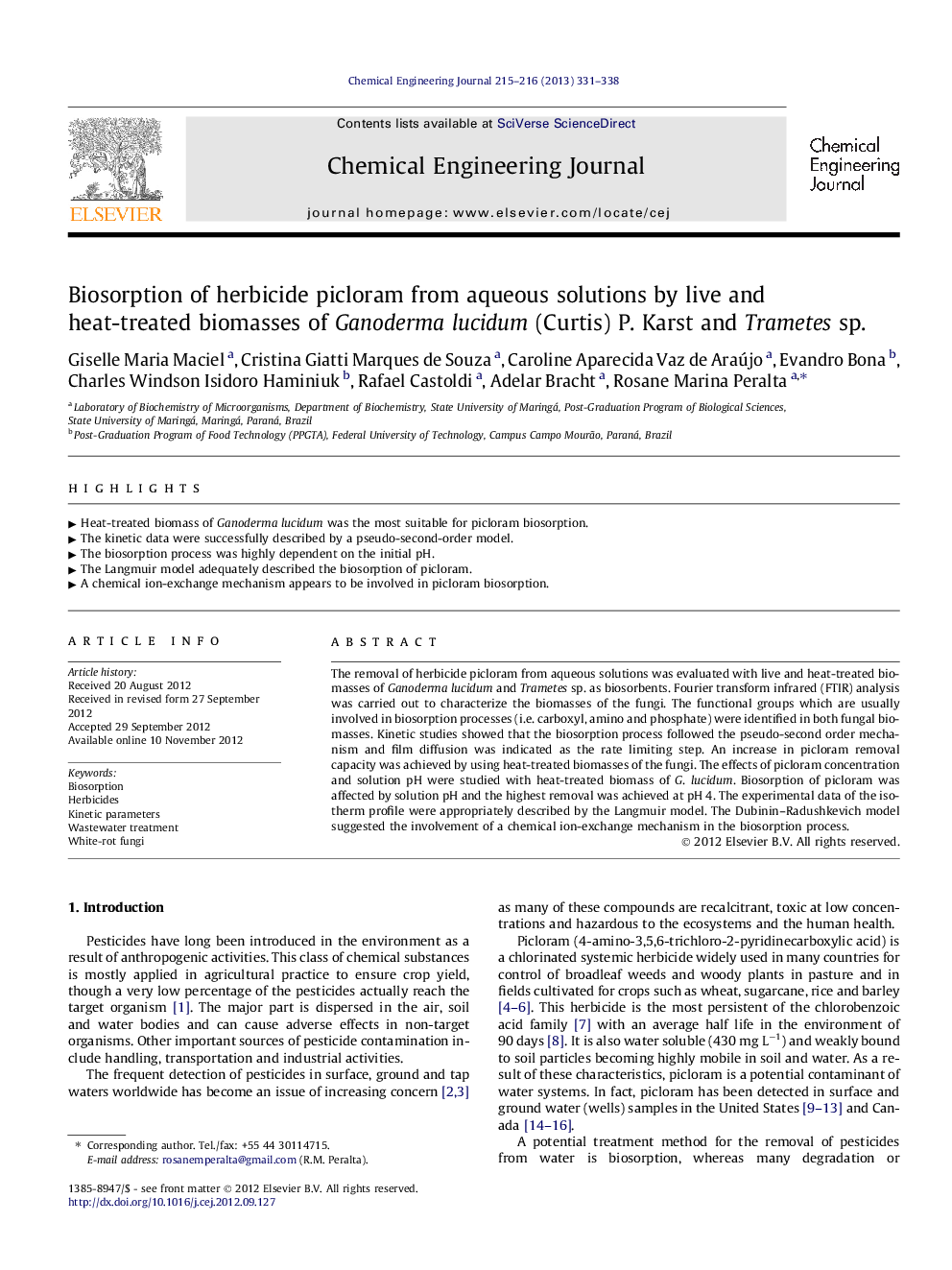| Article ID | Journal | Published Year | Pages | File Type |
|---|---|---|---|---|
| 148959 | Chemical Engineering Journal | 2013 | 8 Pages |
The removal of herbicide picloram from aqueous solutions was evaluated with live and heat-treated biomasses of Ganoderma lucidum and Trametes sp. as biosorbents. Fourier transform infrared (FTIR) analysis was carried out to characterize the biomasses of the fungi. The functional groups which are usually involved in biosorption processes (i.e. carboxyl, amino and phosphate) were identified in both fungal biomasses. Kinetic studies showed that the biosorption process followed the pseudo-second order mechanism and film diffusion was indicated as the rate limiting step. An increase in picloram removal capacity was achieved by using heat-treated biomasses of the fungi. The effects of picloram concentration and solution pH were studied with heat-treated biomass of G. lucidum. Biosorption of picloram was affected by solution pH and the highest removal was achieved at pH 4. The experimental data of the isotherm profile were appropriately described by the Langmuir model. The Dubinin–Radushkevich model suggested the involvement of a chemical ion-exchange mechanism in the biosorption process.
• Heat-treated biomass of Ganoderma lucidum was the most suitable for picloram biosorption. • The kinetic data were successfully described by a pseudo-second-order model. • The biosorption process was highly dependent on the initial pH. • The Langmuir model adequately described the biosorption of picloram. • A chemical ion-exchange mechanism appears to be involved in picloram biosorption.
